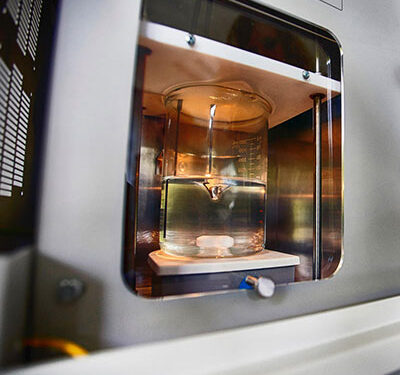Ever thought about why lightning happens? It’s one of the ways Mother Nature nourishes plants, trees and forests. The Eindhoven-based company VitalFluid has mimicked that process.
By simulating the effect of one of these lightning bolts, it is now possible to fertilize greenhouse crops in a sustainable way. The method could also be used for crop protection in the near future. An application for treating burns and skin diseases is still in a test phase.
CEO Paul Leenders founded the company VitalFluid in 2014 out of his previous company in response to a project with TU/e, Wageningen University & Research, Radboudumc, and several companies from Nijmegen, the Netherlands.
Disinfectant properties
The theory behind VitalFluid’s application is not overly complicated. Using electricity, the machine brings ambient air into a plasma phase, the 4th state of aggregation (solid, liquid, gas, plasma). Ambient air is composed of 20 percent oxygen and 80 percent nitrogen. Those portions of oxygen and nitrogen become reactive and then dissolve into the water. As a result, this water temporarily acquires disinfectant properties. This effect disappears after about 20 minutes. What remains is water that contains nitrate, which is the most important nutrient for plants and crops to grow.
“That process is taken step-by-step from nature,” Leenders emphasizes its cradle to cradle design. “A real ‘nature-based process’; a ‘mimicry’ of a thunderstorm. Because exactly the same thing happens in a thunderstorm. When lightning strikes -and it does so about 8 million times a day – the air around that lightning bolt also enters a plasma phase. It is one of nature’s methods of fixating nitrogen. Ten percent of all fixated nitrogen on earth takes place through lightning. So, that represents a significant contribution. This is how nature feeds plants, crops, and forests with nitrogen. It’s a really important natural fertilizer. We have managed to capture that process in a reactor.”
Bundling of processes
The process can be precisely controlled in the VitalFluid reactor which means that more or less oxygen or nitrogen can be added to the water as needed. However, a great deal of research was required in order to succeed. This is because the whole concept is a combination of various electrophysical and chemical processes. One of the main research efforts was to find the right kind of control equipment. “It was quite a challenge to get that process right. That’s also where our know-how is at the moment.”
Read the complete article at www.innovationorigins.com.













